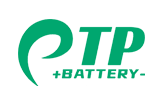Generally including: positive, negative, electrolyte, diaphragm, positive lead, negative lead, center terminal, insulation material, safety valve, sealing ring, PTC, CID, battery shell and electrode lead.
The structure of lithium battery is mainly divided into winding type and stacking type. The liquid lithium battery adopts the winding structure, while the polymer lithium battery has both. The winding type places the positive diaphragm, the diaphragm and the negative diaphragm in turn, and the winding type is cylindrical or flat columnar; the stacking type stacks the positive, the diaphragm, the negative, the diaphragm and the positive in such a way that all the positive electrodes are welded together to lead out, and the negative electrodes are welded together to lead out.
Related News
- 200Ah battery
- Can ternary lithium battery and lithium-ion battery chargers be used interchangeably?
- Two-wheeled electric vehicles 100 km mileage secret: 48V, 60V, 72V with the battery size?
- Key Advantages of Sodium Batteries in Automotive Starting Systems
- What is the difference between a prismatic and cylindrical lithium battery?
- The benefits of battery management systems
- Application of lithium-ion battery packs in household and commercial energy storage
- How long is the real life of lithium iron phosphate battery ?
- What are 48V lithium batteries for?
- Detailed explanation of the working principle of energy storage battery system!







